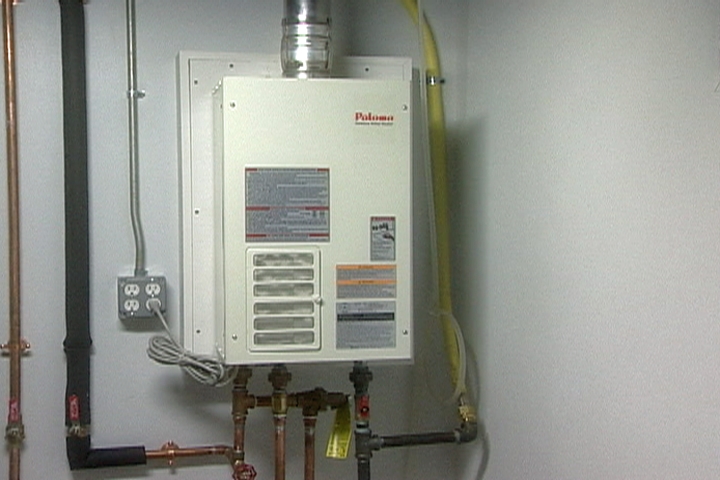Ensuring Longevity of Your Home's Hot Water System: Maintenance TipsWhat to Maintain Your Home's Hot Water System Properly
Ensuring Longevity of Your Home's Hot Water System: Maintenance TipsWhat to Maintain Your Home's Hot Water System Properly
Blog Article
Are you currently trying to find insight on How to Maintain a Hot Water Heater in a Few Simple Steps?

Warm water is essential for day-to-day comfort, whether it's for a refreshing shower or cleaning recipes. To ensure your warm water system runs effectively and lasts longer, regular upkeep is key. This article offers sensible suggestions and understandings on exactly how to keep your home's hot water system to stay clear of disruptions and expensive repairs.
Introduction
Keeping your home's hot water system could seem challenging, however with a couple of easy actions, you can ensure it runs smoothly for many years ahead. This guide covers whatever from recognizing your warm water system to DIY upkeep pointers and knowing when to contact specialist aid.
Relevance of Maintaining Your Warm Water System
Routine upkeep not only prolongs the life-span of your warm water system but likewise guarantees it runs efficiently. Ignoring upkeep can lead to decreased effectiveness, greater energy costs, and also premature failing of the system.
Signs Your Hot Water System Requirements Upkeep
Knowing when your hot water system requires focus can protect against major problems. Watch out for indicators such as inconsistent water temperature level, weird noises from the heater, or rustic water.
Recognizing Your Hot Water System
Prior to diving right into upkeep jobs, it's helpful to understand the fundamental elements of your warm water system. Commonly, this includes the water heater itself, pipes, anode rods, and temperature controls.
Regular Monthly Upkeep Tasks
Regular monthly checks can assist catch minor problems prior to they intensify.
Purging the Hot Water Heater
Purging your hot water heater gets rid of debris build-up, boosting efficiency and extending its life.
Checking and Replacing Anode Rods
Anode rods prevent corrosion inside the tank. Inspecting and replacing them when broken is critical.
Checking and Readjusting Temperature Level Setups
Changing the temperature settings makes certain ideal performance and security.
DIY Tips for Maintenance
You can carry out several maintenance jobs on your own to maintain your warm water system in top condition.
Checking for Leaks
Regularly evaluate pipes and connections for leakages, as these can bring about water damages and higher costs.
Examining Stress Relief Valves
Evaluating the pressure relief valve guarantees it works properly and avoids excessive pressure buildup.
Insulating Pipelines
Insulating warm water pipelines decreases heat loss and can conserve energy.
When to Call a Professional
While do it yourself upkeep is useful, some issues call for expert competence.
Facility Concerns Calling For Expert Help
Instances consist of major leakages, electric problems, or if your hot water heater is consistently underperforming.
Regular Expert Maintenance Advantages
Professional upkeep can include thorough assessments, tune-ups, and ensuring conformity with safety criteria.
Final thought
Normal maintenance of your home's warm water system is vital for efficiency, longevity, and price savings. By adhering to these ideas and knowing when to look for professional assistance, you can ensure a trusted supply of hot water without unforeseen disturbances.
How to Maintain an Instant Hot Water Heater
Before tinkering with your hot water heater, make sure that it’s not powered on. You also have to turn off the main circuit breaker and shut off the main gas line to prevent accidents. Also turn off the water valves connected to your unit to prevent water from flowing into and out of the appliance. 2. When you’re done, you have to detach the purge valves’ caps. These look like the letter “T” and are situated on either side of the water valves. Doing so will release any pressure that has accumulated inside the valves while at the same time avoid hot water from shooting out and burning your skin. 3. When the purge valves’ caps are removed, you have to connect your hosing lines to the valves. Your unit should have come with three hoses but if it didn’t, you can purchase these things from any hardware or home repair shops. You can also get them from retail stores that sell water heating systems. Read the user’s manual and follow it to complete this task properly. When the hosing lines are connected, open the purge port’s valves. 4. You should never use harsh chemical cleaners or solutions when cleaning your unit. Make use of white vinegar instead. It should be undiluted and you’ll probably use about 2 gallons. 5. Now flush your water heater. This task should probably take about 40 minutes. We can’t give you specific directions for this because the procedure is carried out depending on the type, model and brand of your heater. With that being said, refer to the user’s manual. 6. When you’re done draining the unit, you have to turn off the purge port valves again. Remove the hosing lines that you earlier installed on each of the water valves. Put the valve caps (purge port) back in their respective places and be very careful so as not to damage the rubber discs that are found inside these caps. 7. Now that everything’s back in place, check your user’s manual again to find out how to reactivate your water heating system. 8. Once it is working, turn one of your hot water faucets on just to let air pass through the heater’s water supply pipes. Leave the tap on until water flows smoothly out of it. https://www.orrplumbing.com/blog/2014/september/how-to-maintain-an-instant-hot-water-heater/

I hope you liked our post about Water Heater Maintenance Tips You Can't Afford to Forget. Thanks a ton for taking a few minutes to read our post. Enjoyed reading our post? Please quickly share it. Help others discover it. We take joy in your readership.
Call Today Report this page